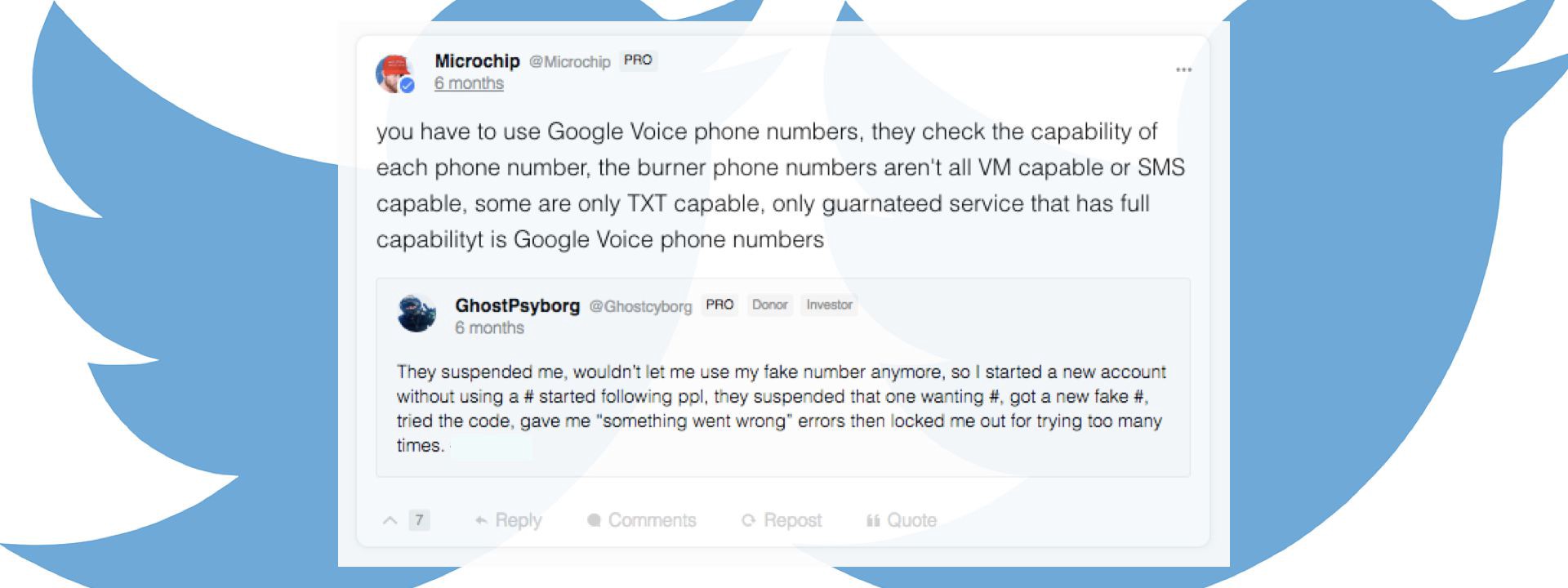#TrollTracker: Twitter Trolls, Google Voices
How banned Americans use Google Voice to get back on Twitter
#TrollTracker: Twitter Trolls, Google Voices

How banned Americans use Google Voice to get back on Twitter

Twitter’s latest vulnerability in its struggle to deal with serial abusers of its platform may be Google.
Former Twitter users whose accounts were suspended for violating the platform’s terms of service (ToS) are advising one another to return to the platform by registering new accounts to a Google Voice phone number, rather than their home or cell numbers.
This effectively changes the digital signature they provide to Twitter when they create a new account, and thus allows them to avoid being linked to the former abusive one.
Twitter requires minimal verified user information to create an account: an email address or a phone number are the only current requirements.
Users who have had their accounts suspended for ToS violations, and tried to set up new ones, argue that Twitter uses the email and phone numbers to identify and block them. Many of their conversations take place on the Gab.ai platform, seen as an Ersatz Twitter for those who have been banned.


Many argued that Twitter also identified and blocked them by their internet provider (IP) address and the unique signature of their mobile device.

Gab users regularly discuss how to get round such blockages.

Most of these remedies are relatively simple. Email addresses are easily created; proxy VPN browsers which mask the user’s IP address are readily available.
However, Twitter can require its users to provide a phone number, which it can contact to verify their identity. Traditionally, users have circumvented this by purchasing pay-as-you-go “burner” phones; however, this imposes a significant cost on those who are banned regularly.

Some users have therefore advised their peers to use Google Voice. Available in the United States, this facility allows users to create up to two Google phone numbers which can be attached to the landline or cellphone of their choice — effectively giving them a parallel, unrecognized number which they can register with Twitter.



The system has its limitations, at least as far as those who are banned repeatedly are concerned. Bot herder “Microchip,” for example, who has been suspended from Twitter literally dozens of times, pointed out in 2017 that Google Voice was effectively a once-only service, in that a given landline or cell number could only be paired with Google Voice once.

However, users for whom banning is a less regular occurrence appear to view Google Voice as their best chance to evade Twitter’s gatekeepers and return to the platform which they profess to hate, but cannot leave alone.

As the larger social media platforms take further action to crack down on hate speech and content deemed offensive, those who spread that content are adapting to the new terms of service, in an evolutionary race between those who set the rules, and those who seek to abuse them. @DFRLab will continue to track this intersection as it evolves.
Follow along for more in-depth analysis from our #DigitalSherlocks.

